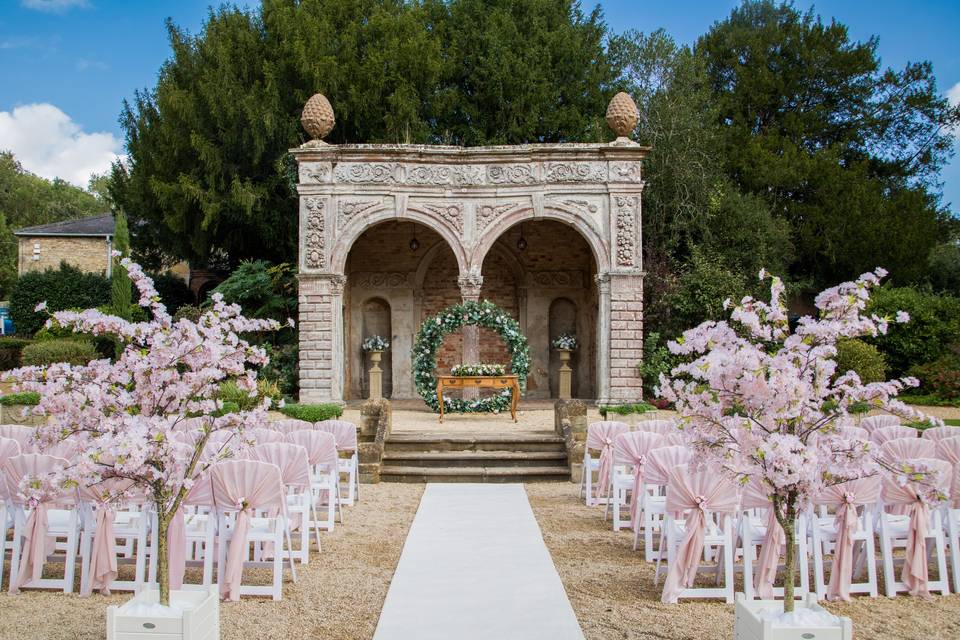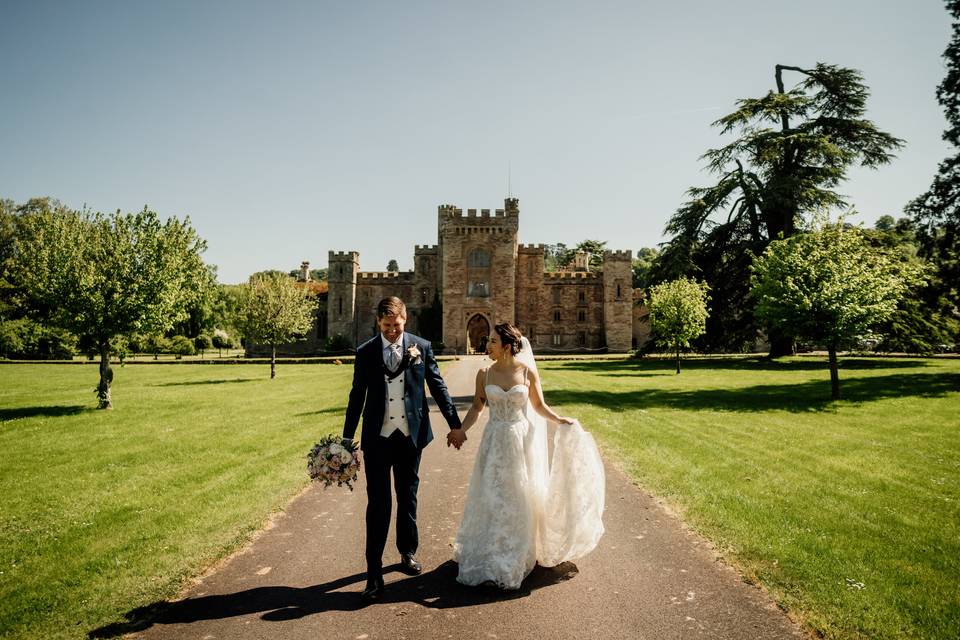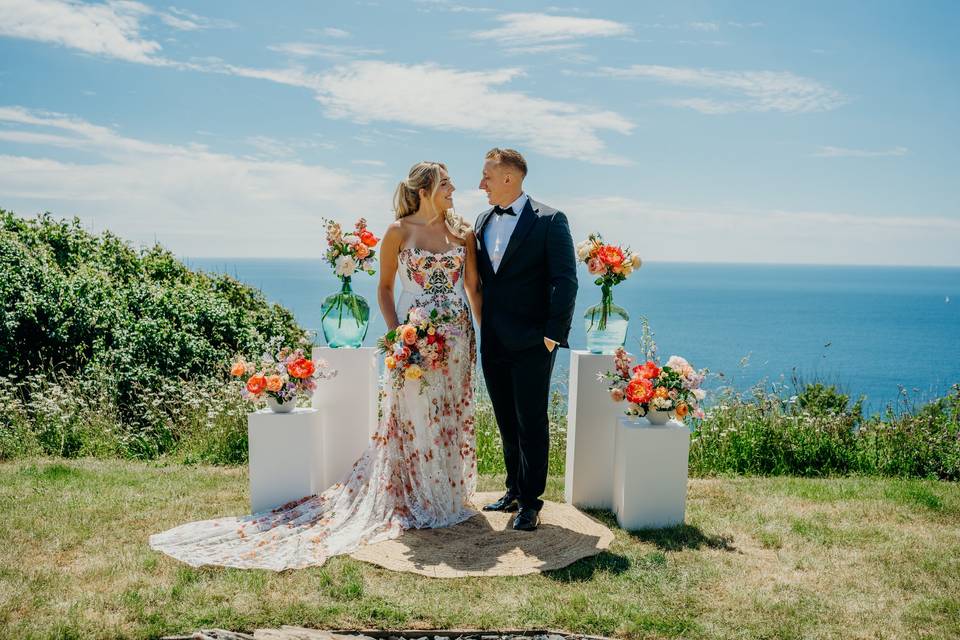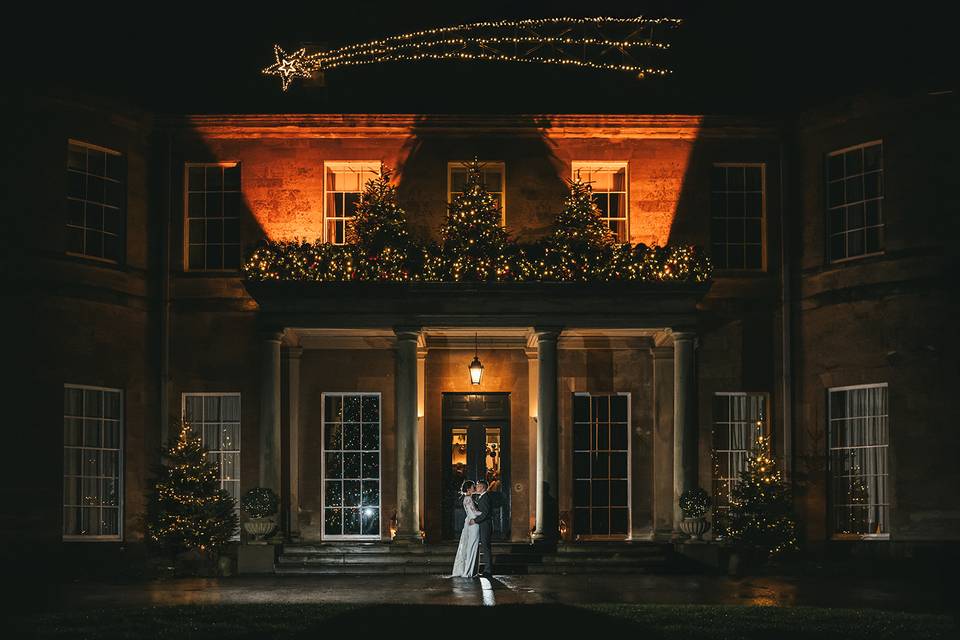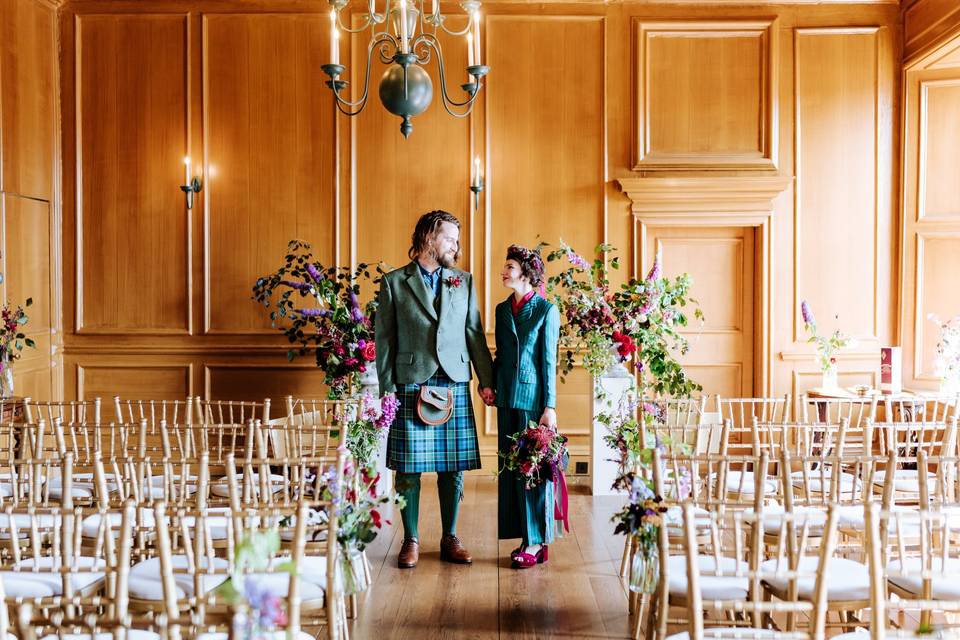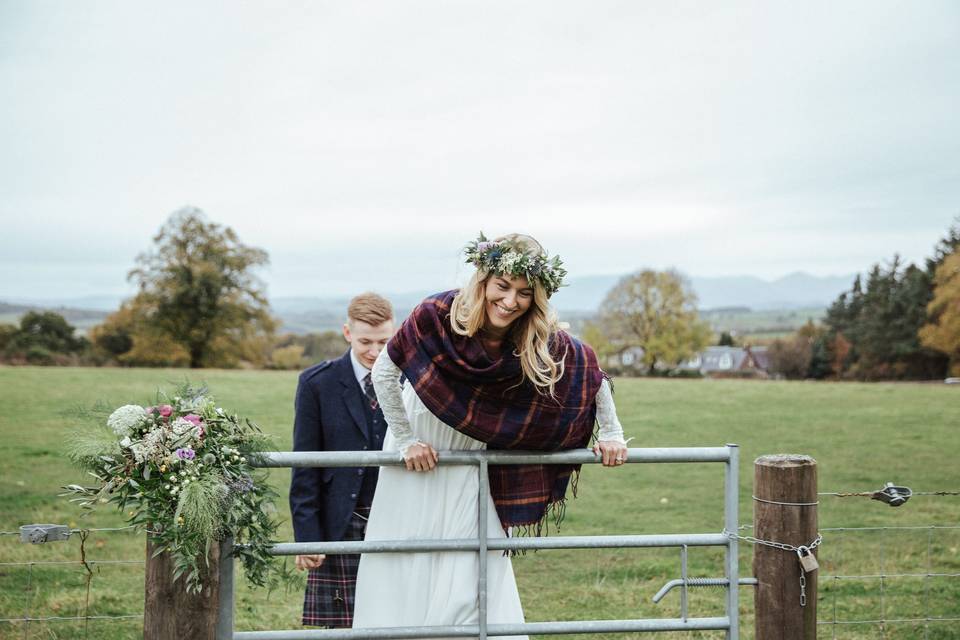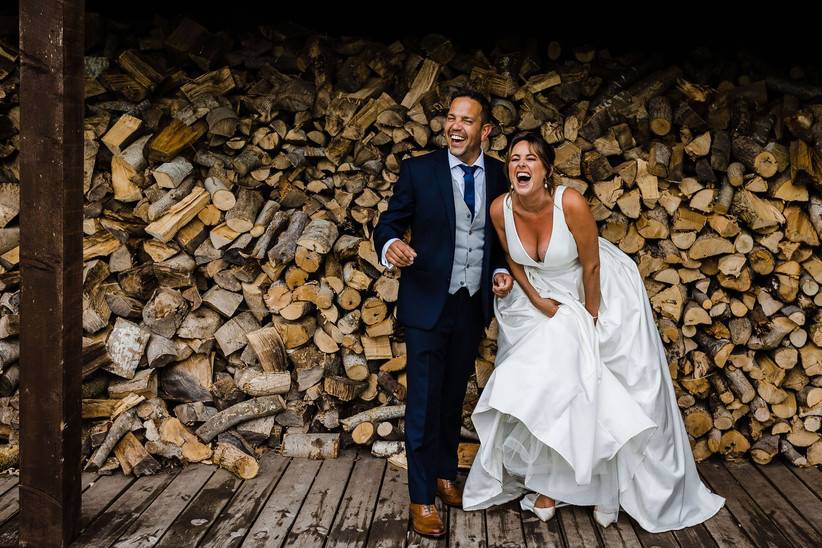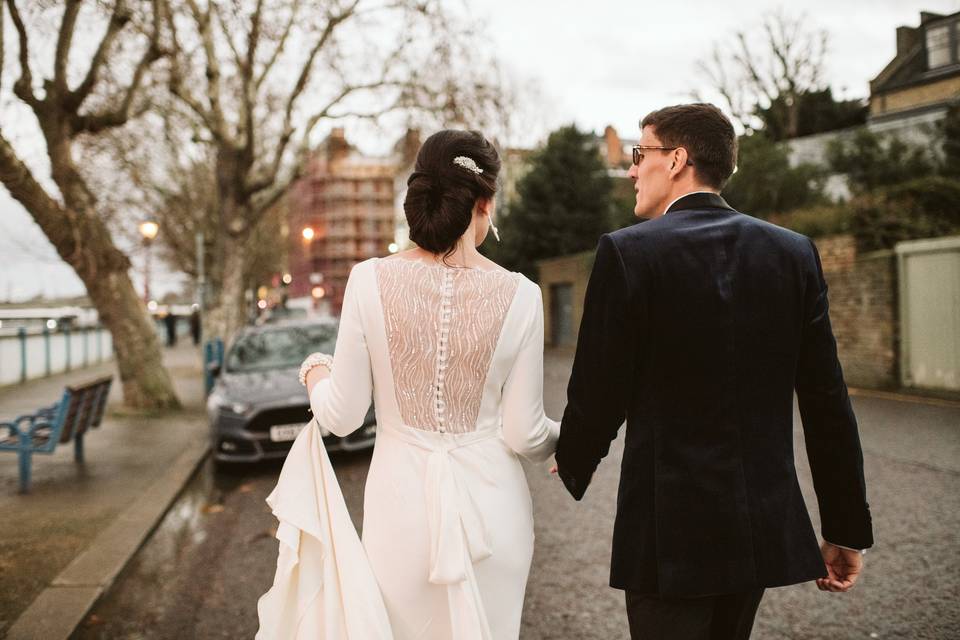Your Wedding Ceremony Explained: What Happens in a Wedding Ceremony?
From seating plans to songs – and even your dramatic departure – we guide you through every step of your ceremony in our essential guide
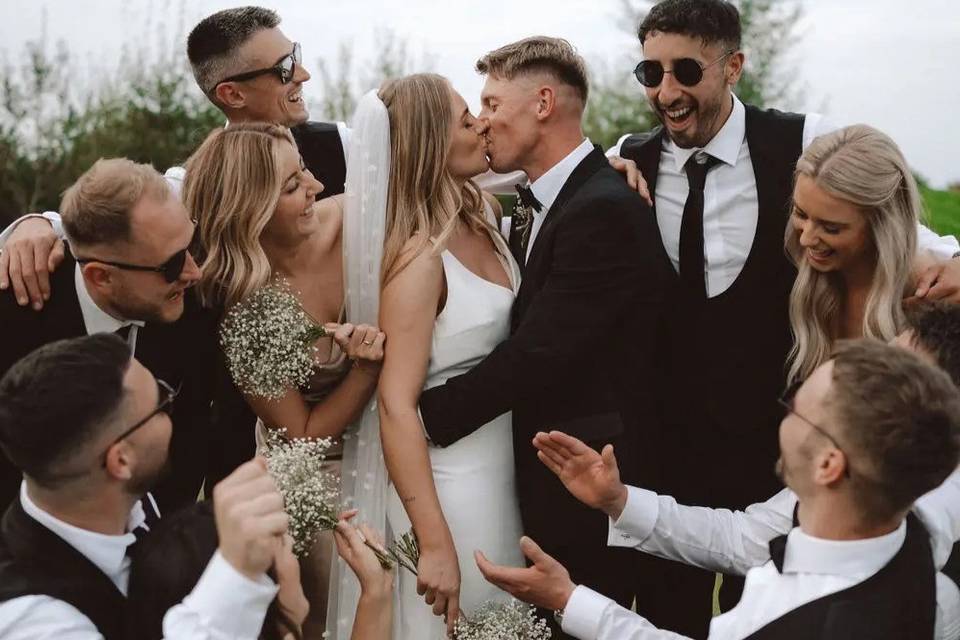

While you’re putting the finishing touches to your reception and thinking about details such as the cake, the favours, and the final playlist for the band, what you might not have realised is that the part of your day your wedding guests will often remember most is the wedding ceremony.
Filled with love and emotion, the wedding ceremony is where you’ll exchange your wedding vows and make some of the most meaningful promises you ever will in life.
Of course, a helpful officiant or member of the clergy will be happy to take you through the ceremony procedure beforehand, but details such as the seating arrangement and the readings will take some forward planning. So, here’s everything you need to know about planning a sterling service and pledging your commitment to one another with our guide to wedding ceremonies.
- Religious or Civil Wedding Ceremony?
- The Order of a Traditional Wedding Ceremony
- Order of Wedding Ceremonies from Different Cultures & Religions
- Alternative Wedding Ceremony Ideas
- Marriage Ceremony Wording
- Wedding Ceremony FAQs
Should I Have a Religious or Civil Ceremony?
For some couples, this is an easy decision. If you have a connection to a particular faith or church, or a strong affinity to a certain wedding venue, you might know where you want to get married and what type of wedding ceremony to choose from the start.
However, the choice isn’t as easy for others, and it’s about working out what suits you best as a couple. Religious ceremonies, including Church of England services, tend to have a traditional wedding service order and religious wedding vow wording that can’t be amended. You may also find there are more restrictions about décor – and perhaps even what you can wear.
Civil ceremonies can be customised to a greater extent – there is some legally required wording but aside from that, you’re usually allowed to have music and readings of your choice as long as there are no religious connotations. You can also write your own vows to go alongside the legal declarations.
What is the Order of a Traditional Wedding Ceremony?
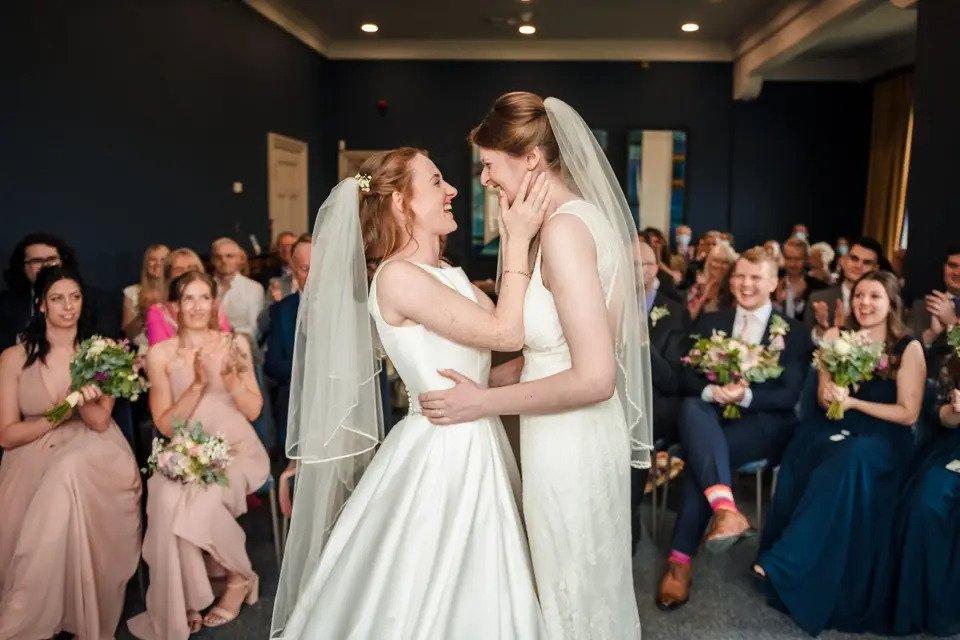
While you’re enjoying those last-minute makeup touches and finishing your glass of fizz, what exactly will be going on behind the scenes, and how long will your wedding ceremony last?
Your partner and his best man or woman should have arrived around 30 minutes before the ceremony is due to start to run through the order of service with the officiant. The ushers (or other members of the wedding party who have been designated to help) should be there shortly after to hand our order-of-service sheets (if you’re having them) and help show guests to their seats.
Once guests are seated and you have arrived, the wedding ceremony can begin.
Make sure you’ve walked through the ceremony before the day, ensuring you’ve worked out timings and logistics. Don’t leave any decisions until the big day!
Here is the traditional wedding service order:
1. The Processional
Waiting behind the doors before the processional starts will be one of the most exciting parts of your day. But however calm you feel, it’s important to know what to expect on the other side. As you step into the spotlight, guests will often stand, and then take their seats again when you’re at the front.
Traditionally in the UK, the groom and groomsmen will be waiting at the altar for the bridesmaids to walk down one by one, ending with the bride being walked down the aisle by her father. If you’re having flower girls and page boys, they’ll walk down just before the bride. In the US, the bridesmaids and groomsmen often walk down together in pairs and then peel away to opposite sides when they reach the front.
Otherwise, you may both choose to walk down the aisle – either at different times or together. You could also walk down with either parent or alone. The processional is really up to you, and you can choose which members of your wedding party and family take part.
Practice the processional before the big day. Think about where you will all line up prior to the ceremony. What order will everyone walk in? And where will they stand once they reach the end of the aisle?
2. Welcome
Once you’re both at the front, the officiant will welcome you and kick off proceedings. Discuss what you’d like with your officiant before the ceremony – if it’s a religious service, there may be a set introduction, but a celebrant can write a bespoke ceremony welcome for you.
3. Song or Readings
There tends to be a hymn at the beginning of religious wedding ceremonies and some couples choose to include a vocal performance or instrumental, but you can choose to just have readings if you’d prefer.
4. The Marriage Ceremony
The official ceremony begins with an address to you, the couple, where the officiant reminds you of the responsibilities and meaning of the vows you are about to take. This is also the part where the officiant asks if there’s any reason in law why you should not marry.
You’ll then exchange vows. To make your marriage legal, there are certain declarations and contracting words you must say. However, for a civil ceremony, the rest of your vows are up to you.
You will often need to run these past the registrar or religious officiant before the wedding as they can have strict rules about what you’re allowed to say.
5. Exchanging of Rings
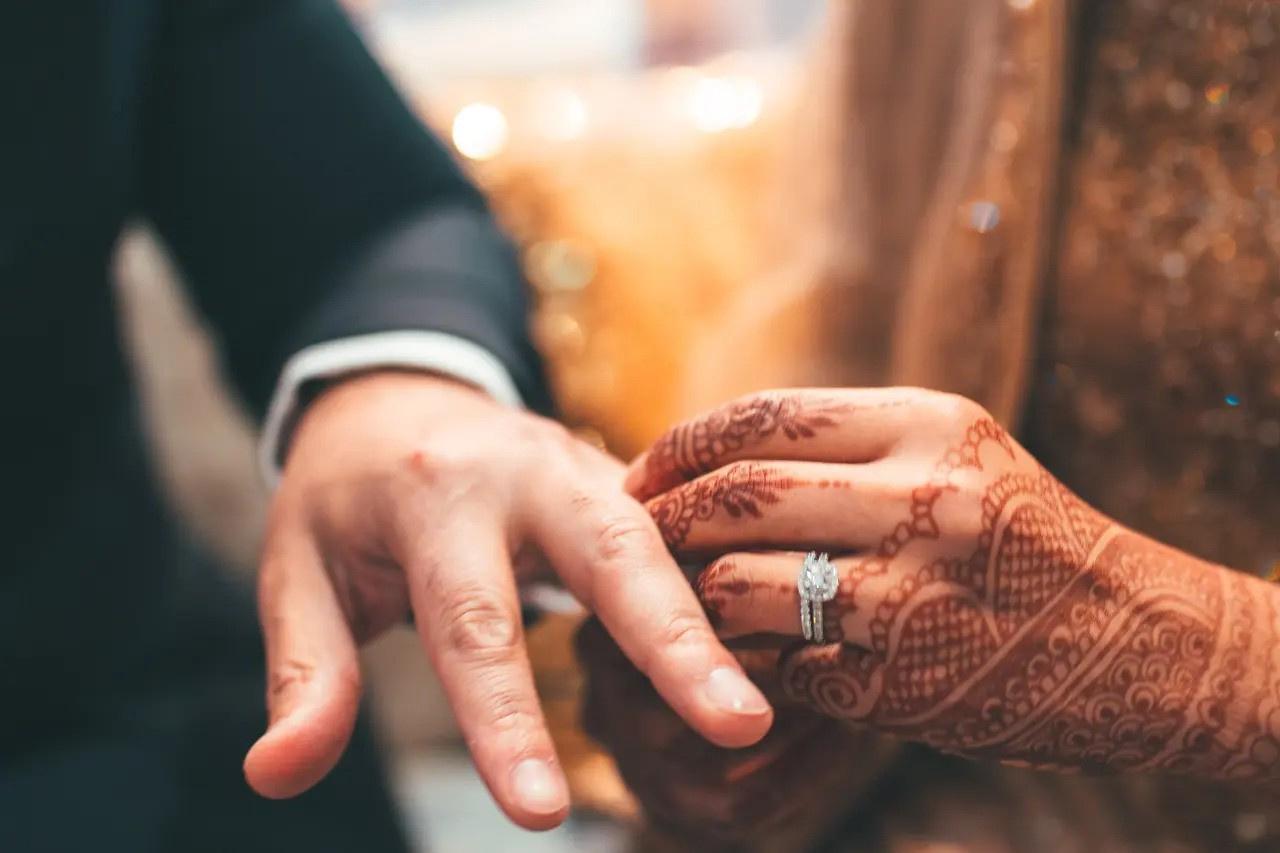
It’s not actually a legal requirement to exchange wedding rings but many couples do opt for this. The officiant will be handed the rings, usually by the best man or another member of the wedding party, and then in turn the couple will place a ring on the other’s finger with a phrase of choice.
6. Declaration of Marriage/First Kiss
The officiant will officially announce that you are hitched and say something along the lines of, “By the power vested in me, I now pronounce you husband and wife” – or wife and wife, or husband and husband!
The officiant will also say you may kiss, and this is your cue to celebrate with a lovely big smooch in front of all your loved ones. They’ll likely be cheering, clapping and whopping at this point. It’s one of the most important pictures your photographer will capture.
7. Optional Address, Prayer, Reading and/or Song

At a religious ceremony, you’ll often hear a talk from a member of the clergy, bible reading and prayers at this point. In a non-religious ceremony, this is a lovely point to do another wedding reading.
8. Signing of the Register
The final step in making your marriage legal is to sign the marriage license. It’s worth having some background music playing at this point as your guests will be sat for a few minutes while you do so.
The license needs to be signed by two witnesses (you should choose these in advance, and it can be anyone) and the officiant.
9. Ending of the Service
Your officiant will speak some closing remarks. Usually these are congratulations, well wishes and occasionally a few words of thanks.
10. Recessional and Exit
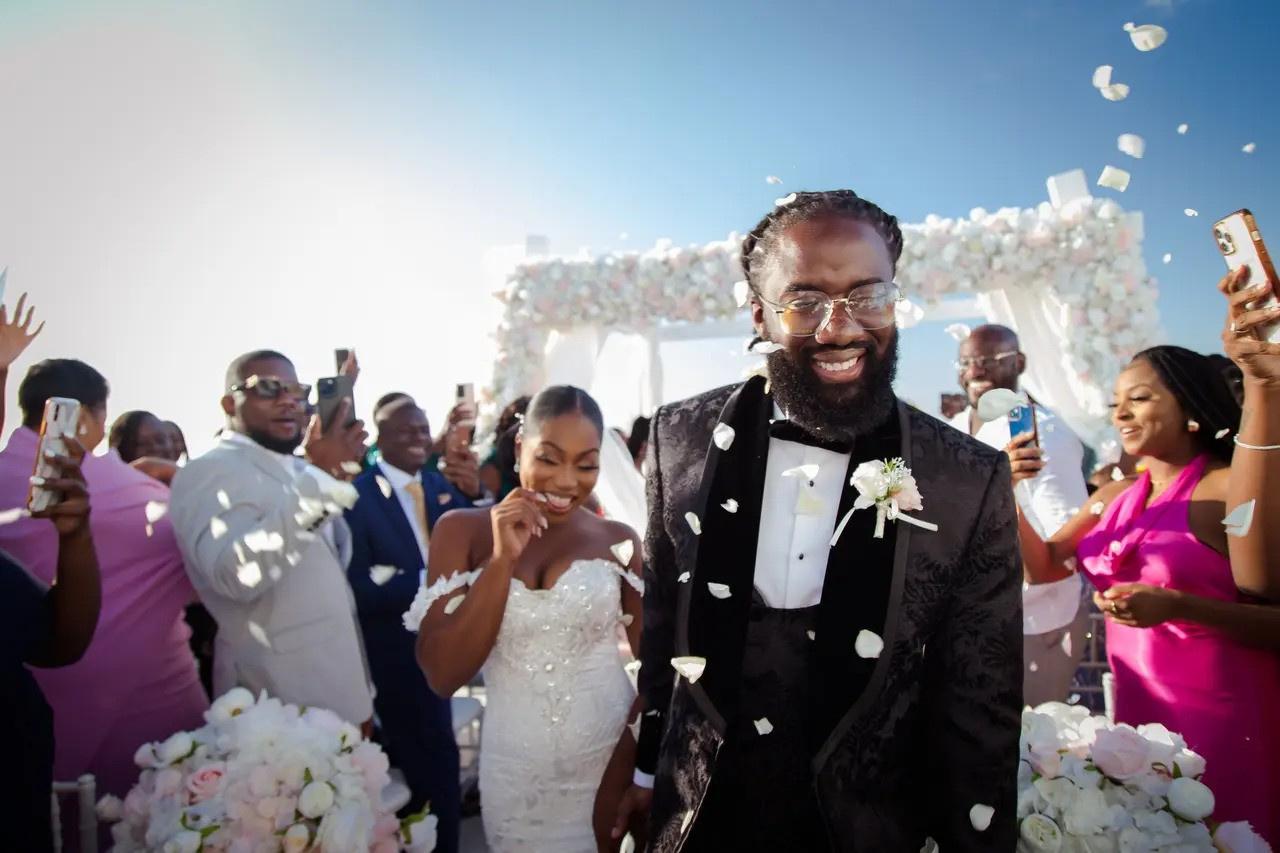
You and your partner now get to walk back up the aisle and head off to your reception party. You’ll walk down together to music and will either be showered with confetti as you walk or outside of the venue. Your wedding party will follow you out (usually in pairs) and then your guests will start exiting from the front row following you out.
If you’re getting married in a separate ceremony venue, try not to hang around too long. There may well be a wedding soon after yours – and your guests will probably be longing for a drink and some nibbles.
You could also use your departure from the ceremony venue as another photo opportunity; hire a classic car or a vehicle that fits with your wedding style to speed off in style.
Order of Wedding Ceremonies from Different Cultures & Religions
Planning your wedding ceremony involves understanding the traditions and customs that will make your day special. Whether you're envisioning a ceremony steeped in religious rituals or one that's more secular, here's a look at what typically happens in various types of wedding ceremonies.
Order of a Jewish Wedding Ceremony
A Jewish wedding ceremony is rich in symbolism and tradition, typically beginning with the signing of the ketubah (marriage contract) in the presence of witnesses. The couple then proceeds to the chuppah, a canopy symbolising the home they will build together.
The ceremony includes the kiddushin (betrothal), where blessings are recited over a cup of wine, and the groom places a ring on the bride's finger. This is followed by the reading of the ketubah and the nisuin (marriage), which involves the sheva brachot (seven blessings) recited over a second cup of wine.
The ceremony concludes with the groom breaking a glass underfoot, a moment that signifies the fragility of life and the destruction of the Temple in Jerusalem, reminding all present of the need to temper joy with solemnity.
Order of a Hindu Wedding Ceremony
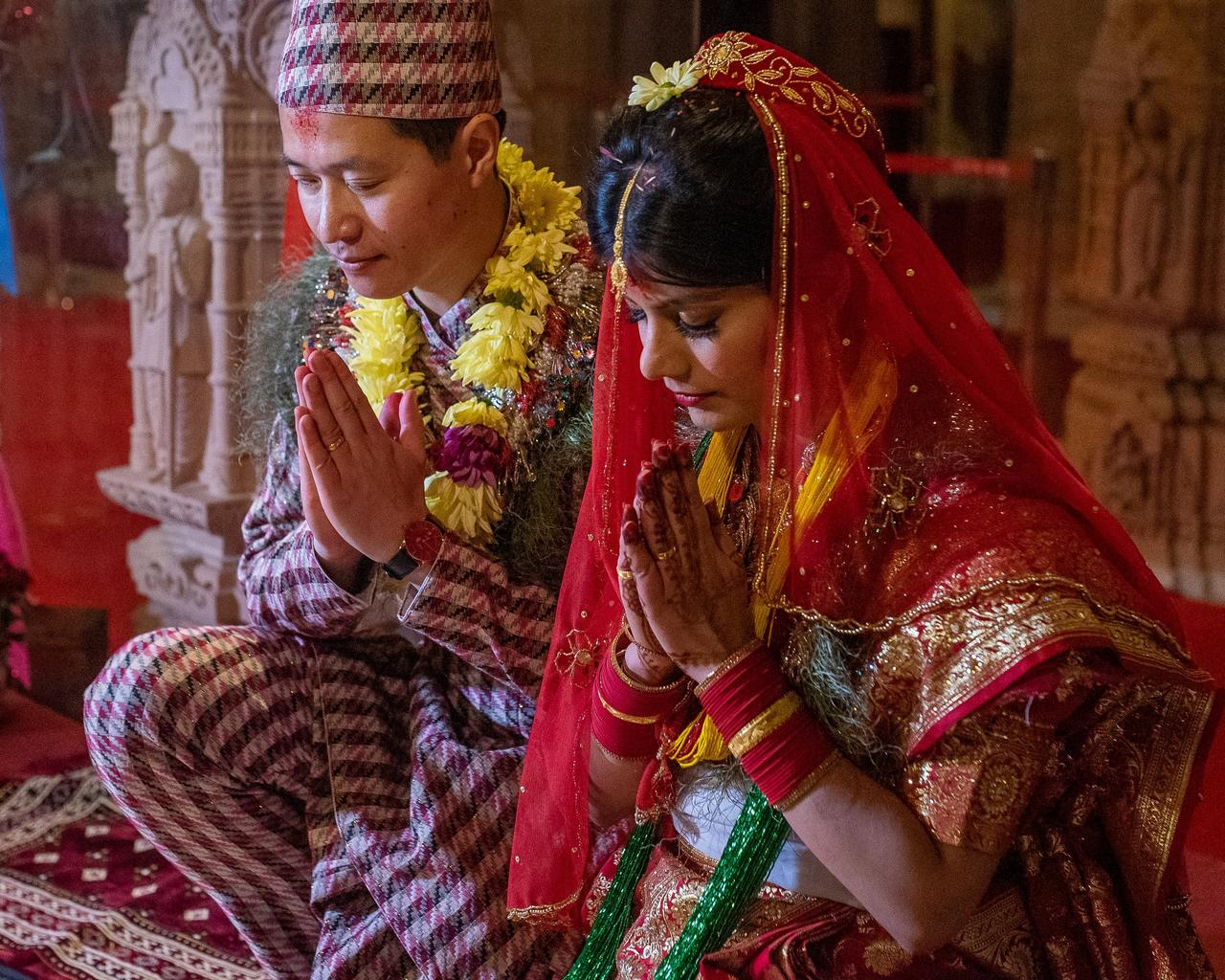
Hindu wedding ceremonies are vibrant and elaborate, often spanning several days and encompassing various rituals that honor the couple's commitment and the joining of their families. A central element is the Saptapadi, or Seven Steps, where the couple takes seven steps together around a sacred fire, each step representing a vow they make to each other.
The ceremony typically begins with the Kanyadaan, where the bride's parents give her hand to the groom, symbolising the transfer of responsibility. This is followed by the Mangal Pheras, where the couple circles the sacred fire, and the Sindoor Daan, where the groom applies vermillion powder to the bride's forehead, signifying her new status as a married woman.
The rituals are accompanied by the chanting of Vedic hymns and the blessings of elders, creating a deeply spiritual and communal experience.
Order of a Catholic Wedding Ceremony
A Catholic wedding ceremony is a sacred rite that typically takes place within a Mass, emphasising the sacramental nature of marriage. The ceremony begins with a procession, followed by readings from the Bible, a homily by the priest, and the exchange of vows and rings.
The couple may choose to include the Nuptial Mass, which involves the Liturgy of the Eucharist, allowing them and their guests to partake in Holy Communion. Throughout the ceremony, there are prayers and blessings that highlight the spiritual significance of the marital union, and the couple may also participate in the lighting of a unity candle, symbolising their two lives becoming one.
The ceremony concludes with a final blessing and the recessional, marking the couple's first steps together as husband and wife.
Order of a Non-Denominational Wedding Ceremony
For couples seeking a personalised and flexible approach, a non-denominational wedding ceremony offers the freedom to incorporate elements that reflect their beliefs and values. Such ceremonies often begin with a welcome message and an introduction that sets the tone for the occasion.
This is followed by readings, which can be literary, poetic, or even excerpts from meaningful texts chosen by the couple. The exchange of vows and rings remains a central component, allowing the couple to express their commitment in their own words.
Additional rituals, such as a unity candle lighting, sand ceremony, or handfasting, can be included to symbolise the joining of two lives. The ceremony concludes with a pronouncement of marriage and a celebratory kiss, encapsulating the couple's unique journey and the beginning of their shared future.
Each of these ceremonies offers a distinct pathway to celebrating love and commitment, allowing couples to choose the traditions and rituals that resonate most deeply with them. There's so much more to be learned about the wedding traditions and rituals from different religions.
What Are Some Alternative Wedding Ceremony Ideas?
You’ve got much more creative freedom for a totally unique ceremony if you choose a celebrant-led ceremony. Humanist celebrant ceremonies are legal in Scotland and Northern Ireland, but in England and Wales, you’ll need to do the legal part (a civil ceremony) before or after. This means you don’t need to worry about the legal declarations on the day.
One of the best ways to make a ceremony feel personal is to perform a symbolic, unifying act. Examples of these include a sand ceremony, hand-fasting, a candle ceremony or jumping the broom.
Here’s an outline of what a humanist wedding ceremony looks like from humanism.org.uk:
- Arrival of the couple (individually or together)
- Introductions and welcomes
- Words about love and commitment from a non-religious perspective
- Reading or poem
- The couple’s story – how they met, their shared values, hopes for the future
- What marriage means to the couple
- Reading, poem, or song
- The couple’s promises/vows
- Meaningful symbolic act (e.g., hand-fasting)
- Exchange of rings
- Pronouncement as married
- Words of well-wishing
- Closing and departure
It's not too dissimilar from the traditional ceremony structure, but you've got a lot more freedom. Any one of these parts can be left out or made the core of your ceremony.
What Are the Words in a Marriage Ceremony?
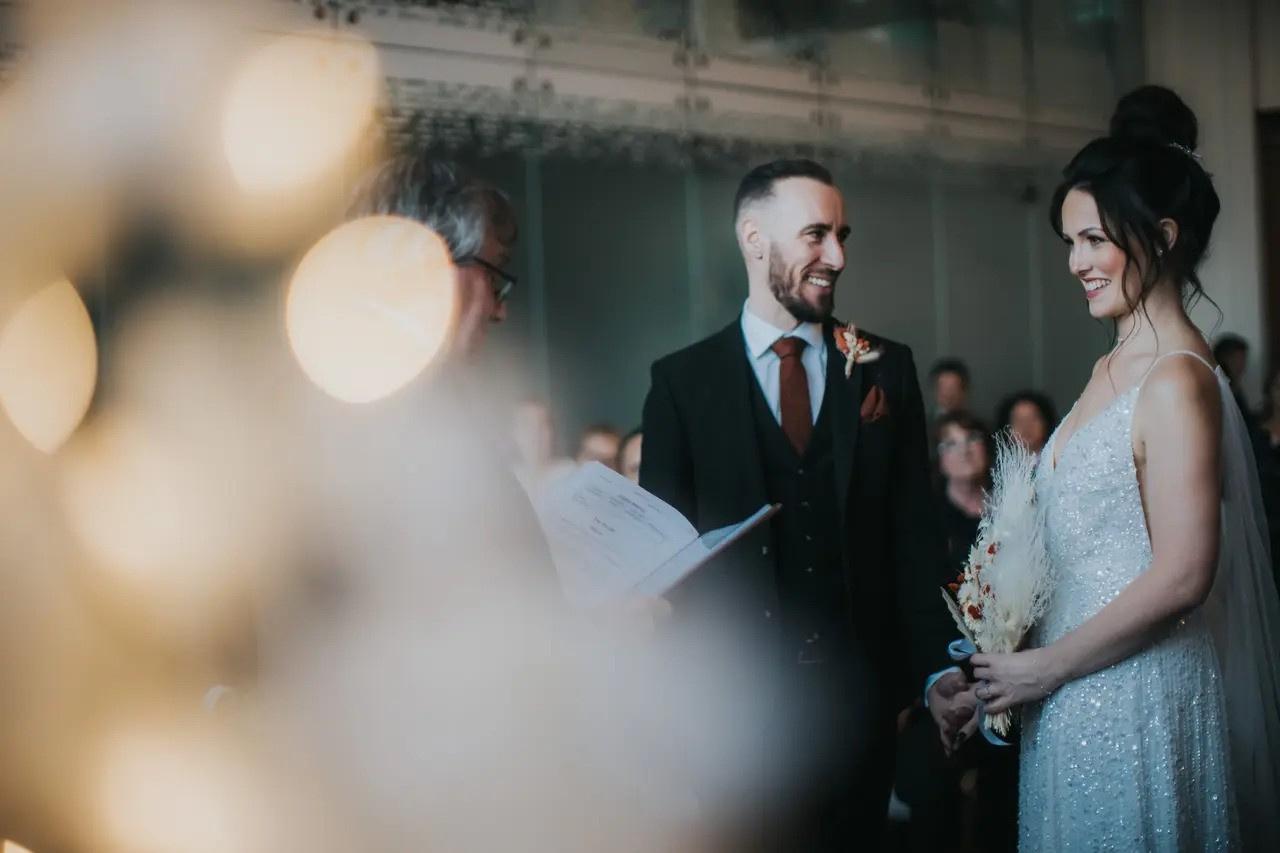
There are standard declarations and contracting statements that you must make for a legal wedding ceremony, but there’s still lots of room to personalise your vows. Here are the minimum vows you need to say, and around these you can make a statement of your love, commitment and future wishes.
Traditional Legal Declaration and Contracting Words
I do solemnly declare, that I know not of any lawful impediment why I (your name) may not be joined in matrimony to (your partner's full name).
I call upon these persons, here present, to witness that I (your full name) do take thee (your partner's full name) to be my lawful wedded wife/husband.
Modern Legal Declaration and Contracting Words
I declare that I know of no legal reason why I (your name) may not be joined in marriage to (your partner's name).
I (your full name), take you (your partner's full name) to be my wedded wife/husband.
Simple Legal Declaration and Contracting Words
Registrar: "Are you (your full name) free, lawfully, to marry (your partner's full name)?"
Reply: "I am."
I (your full name) take thee (your partner's full name) to be my wedded wife/husband.
6 Things You Need to Consider for Your Wedding Ceremony
1. The Seating Plan
If you’re following a traditional ceremony, you’ll want to reserve the first few aisles for immediate family. Most guests know that they shouldn't sit in the first few rows, but it might be handy to mark this out with some reserved signs. These seats are usually kept free for members of the wedding party, you and your partner’s parents and any guest readers you may have.
If you don’t want to go traditional, opt for alternative ceremony seating ideas like a circle or a wedding in the round. Again, a few handy signs and on-the-ball ushers will help out guests who aren't used to this.
2. Wedding Party Roles

Make sure your wedding party know who’s doing what. For example, the ushers should be on hand before the ceremony to ensure all of your guests are welcomed, that everyone’s seated, and hand out an order of service if you have one.
Make sure they know other useful info, too, like where the toilets are, and where to meet after the ceremony for any transport to the reception.
3. The Timings
The wedding ceremony can be as short or long as you want, however, remember your guests don't want to be sitting for hours. In a registry office, your ceremony may be as brief as 10-15 minutes long, while a civil ceremony at a venue with a registrar can be around 20-30 minutes. A celebrant ceremony may last 30-45 minutes, while a church ceremony can go on for an hour or longer.
“Typically, a civil ceremony will last around 30 minutes depending on the number of readings and other personalisation, but religious ceremonies can of course be longer,” suggests Louise Hearsum of London wedding venue Pembroke Lodge.
“For a civil ceremony, you’ll also need to allow 5-10 minutes for interviews prior to the ceremony taking place," she adds.
4. Music
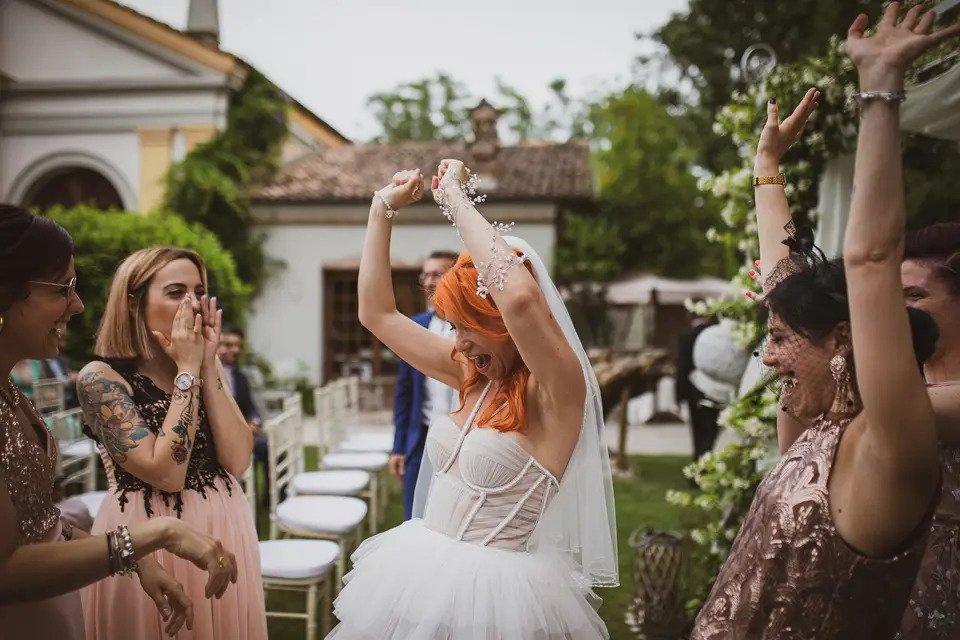
The wedding ceremony music is an important factor to consider for the ceremony. Are you having background music as guests are seated? Will the music be live (for example, a harpist or orchestra), or do you need to prepare a USB stick or CD? Preparing these in advance will guarantee a stress-free and seamless order of events.
5. The Final 'Fluff'
Once at the top of the aisle, who will do the final 'fluff'? It’s likely your dress or veil will have moved as you walked down the aisle – to ensure perfect photos ask someone responsible to fluff before the registrar begins. Make sure they know how you want it – will the train be straight behind you or curled towards the front for the best photos?
6. The Confetti Shot
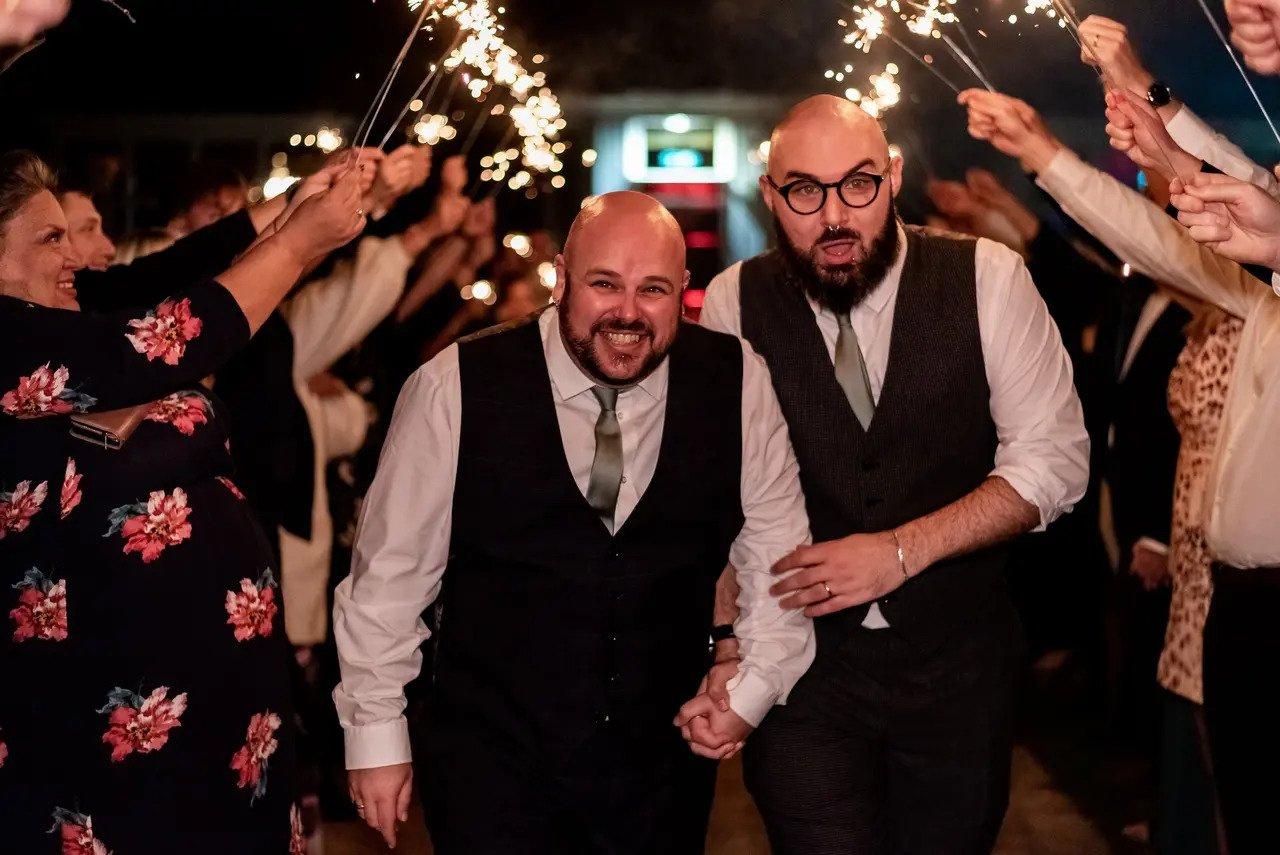
The recessional will be the first walk you take with your new husband or wife, and after walking down the aisle, you will have a choice of what to do next.
One of the best ceremony moments in terms of photographs is the couple walking down the aisle and exiting to their crowd of guests while being showered with confetti. If you want to maximise the drama, speak to your officiant about waiting in another room while your guests leave the ceremony area. Then you can return to swing the venue doors open and face your adoring public.
Also note that some venues or churches do not permit confetti. If this is the case, have members of your wedding party arrange your guests at a chosen location and then hand out confetti – and get ready for that perfect photo!
Wedding Ceremony FAQ
Still have some questions about your wedding ceremony? We answer your wedding ceremony FAQs!
How Many Readings Do You Need for a Wedding Ceremony?
We’d suggest keeping to two readings. What you choose depends on whether you’re having a religious ceremony or a civil ceremony, so always check with your officiant first whether or not it’s suitable.
You might choose a reading, poem or passage yourself, or allow your readers to choose, in which case, make sure you give them some guidance. Think carefully about who you will ask to do a reading, too. It’s a lovely way to give a special role to someone you’re close to, but your readers should have a clear voice and the necessary confidence.
How Many Songs Do You Need for a Wedding Ceremony?
Your wedding songs should include:
- A prelude (some background music while your guests are being seated). “I’d suggest making this around 30 minutes long,” says Louise.
- The processional music that you will walk down the aisle to (keep this to around two minutes).
- An interlude for the signing of the register – this could be a vocal performance or instrumental and should be around 10 minutes.
- The recessional song which will be played as you both walk back down the aisle (around two minutes).
You might also want to consider a postlude – some ambient music which can be played until everyone has left the ceremony venue.
How Much Does a Registrar Cost?
If you’re getting married in a register office or an approved civil ceremony venue, the cost of booking a registrar for marriage is £46.
If you are having a religious ceremony, your documents can be signed by an authorised minister or member of the clergy. You’ll need to check with your venue that there is an authorised person available. If not, you’ll need to book a registrar, which costs £86 for religious ceremonies.
“Remember that booking the registrar is independent to booking your ceremony venue and can be done up to a year in advance – we always advise that it’s done as soon as possible,” adds Louise.
If you’re still searching for your dream venue then don’t miss our list of the essential questions you need to ask your wedding venue.


